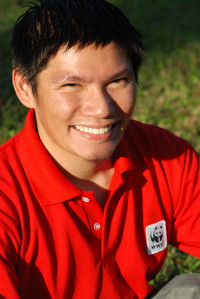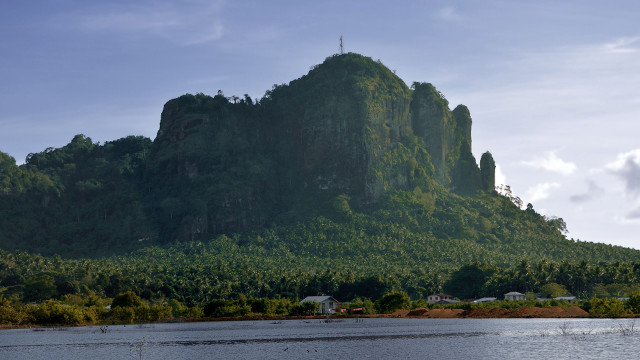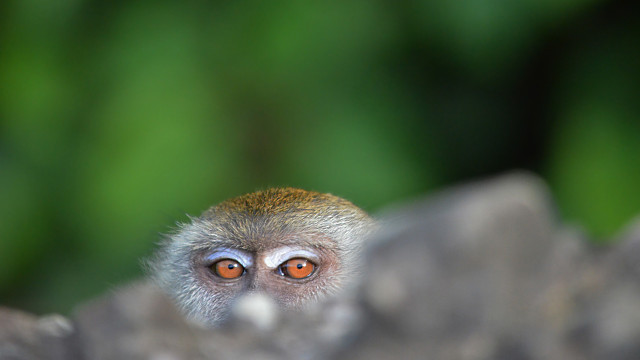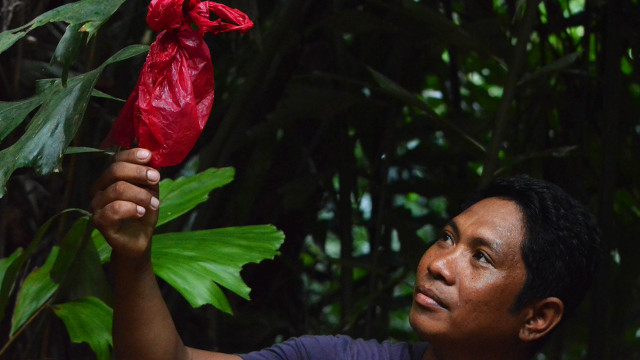SUMMARY
This is AI generated summarization, which may have errors. For context, always refer to the full article.
TAWI-TAWI, Philippines – Gruff and grizzled, the guardian stared with steely orbs the color of flame – gauging our character and purity. Baring his yellow teeth, he held out an upturned palm, barring us from going further.
“We should give offerings,” cautioned a sweating Munir Hamsaji, one of my climbing teammates. Having climbed this mountain many times before, Munir cautiously untied a knotted plastic bag, took a crusty piece of bread, and tossed it to the waiting warden.
Delighted, the long-tailed macaque snatched the treat and hooted off into the forest. Relieved, we trekked on. Bud Bongao’s guardians had allowed us passage.
Tawi-Tawi’s most famous mountain
Cloaking its secrets with verdure and mist, Bud Bongao is Tawi-Tawi’s most famous mountain, sprouting 340 meters above the sea. It’s a revered pilgrimage site for both Christians and Muslims, who come in droves to brave slippery rocks and the snarl of undergrowth to visit one of 3 carefully-tended Tampat or shrines.
Over 630 years ago, Arab merchant Karim ul-Makhdum landed in the Philippines to spread Islam, establishing the country’s first mosque – Sheik Karimal Makdum Masjid – in Simunul, a small island off the coast of Tawi-Tawi. Legend has it that one of his original followers – a preacher – was buried atop Bud Bongao.
Today the mountain is a 250-hectare treasure trove of biodiversity and one of the last remaining moist forests in the Sulu archipelago. It is also the first site in the Autonomous Region in Muslim Mindanao (ARMM) to be administered completely by the local government.
“Bud Bongao is an icon of terrestrial biodiversity conservation and eco-tourism in Tawi-Tawi because of the wealth of its wildlife and its unique cultural importance,” said World Wide Fund for Nature (WWF) Tawi-Tawi project manager Dr Filemon Romero.
In a well-attended ceremony held in March, officials from WWF and the Department of Environment and Natural Resources (DENR) turned over the management of Bud Bongao and adjacent Bud Kabugan to the local governments, led by Bongao Mayor Jasper Que, Tawi-Tawi Governor Nurbert Sahali, and Representative Ruby Sahali.
Hand-in-hand with the DENR, the United Nations Development Programme (UNDP), Global Environmental Facility (GEF), and the local government units in Tawi-Tawi, WWF has been conducting baseline studies and communications initiatives for Bud Bongao since December 2010.
“It’s one of the model sites under the New Conservation Areas in the Philippines Project or NEWCAPP, which protects 12 key biodiversity areas across the nation,” says DENR protected areas specialist Ariel Erasga.
“We wish to highlight novel ways of protecting biodiversity hubs – particularly if their management plans were developed by communities, indigenous groups and local government units.” (READ: PH natural parks management rated ‘poor’ to ‘fair’)
NEWCAPP aims to expand and strengthen the terrestrial protected area (PA) system of the Philippines by developing new PA models and building capacities for effective management. (READ: 5 ways to improve how we protect our parks)
The expanded PA system will have comprehensive ecological coverage plus strong links to both local communities and indigenous lands through the development and integration of new conservation zones.
Now, it seems, all the people of Tawi-Tawi shall become guardians of Bud Bongao.
“All that we see and experience now, we hope to preserve for the future,” said Governor Sahali at the turnover.
Prayers on trees
Following the spine of Bud Bongao, we passed an enormous Molave tree said to be the largest of its kind in the country. We finally broke free of the forest’s dappled gloom to reach the sunbathed summit.
Savoring a few breaths, plus the breath-taking view of the Celebes Sea, I looked south – squinting at the faint outline of Malaysian Borneo. Around us, branches were adorned with knotted strips of plastic, cloth, and foil – prayers for safe passage. Overhead were lazy ribbons of cloud.
I took a moment to pray to God – by whatever name pilgrims called him. Descending, we encountered a group of Muslim pilgrims, decked out in bright regalia, the women wholly covered in long gowns and hijab scarves.
I wondered how they could stand the heat – bearing umbrellas and basketfuls of food to boot. We stopped and talked with an Imam, a religious leader.
“The preacher wished to be buried atop the highest point in Bongao so his followers can prove their sincerity,” explained Ishmael Uto. “This weeds out the unworthy, ensuring that pilgrims work hard to turn wishes into reality.”
My sole wish is for the mountain’s guardians – humans, spirits, and monkeys alike – to continue protecting one of the last bastions of terrestrial biodiversity in Sulu.
As the venerable Imam and I – both pilgrims to the same God – parted ways, I said, “Salaam alaiukum.” He smiled and shook my hand warmly. “And peace be with you, brother.” – Rappler.com

Add a comment
How does this make you feel?



There are no comments yet. Add your comment to start the conversation.